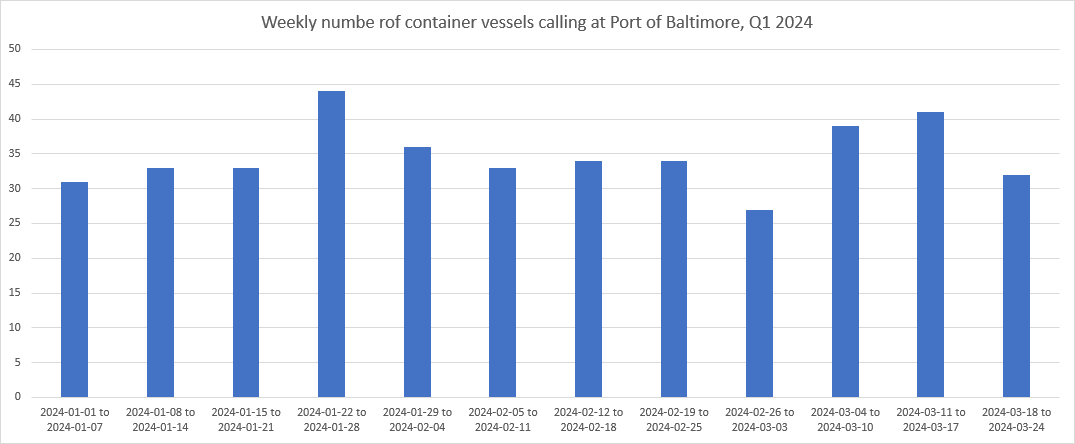Port of Baltimore closure could clog nearby ports as freight is diverted
Bridge collapse halts operations at the nation’s largest facility for autos and light trucks, roll on/roll off heavy farm and construction machinery, imported sugar, and imported gypsum

Shippers and carriers up and down the East Coast are scrambling today to adjust to the sudden closure of freight flows through the Port of Baltimore after a critical bridge collapsed overnight when it was struck by an errant container ship.
Vehicle traffic into and out of the Port of Baltimore was closed on Tuesday for an unlimited time, although port operations continued at the site itself with trucks being processed within those marine terminals, the port said.
The incident occurred at about 1:30am on Tuesday morning when the 10,000-container vessel Dali, part of the Maersk/MSC 2M alliance, was on its way out of the Port of Baltimore toward Colombo, Sri Lanka. Dali collided with a support of the Francis Scott Key Bridge, leading to its collapse. Since most of Baltimore’s port terminals and all of its container terminals are located on the inland side of the collapsed bridge, its closure means that containerized exports planning to depart from Baltimore will either need to wait until the waterway re-opens, or be rerouted by truck or rail to alternate ports, according to the freight booking platform Freightos.
The closure will have a definite impact on freight flows in the region, since the port has been growing. Just four weeks ago, the state announced that the port had rebounded from pandemic impacts in 2023 by handling a record 52.3 million tons of foreign cargo, worth $80.8 billion, including 1.1 million twenty foot equivalent units (TEUs) of containers. Specifically, Maryland’s Port of Baltimore ranks first among the nation’s ports for volumes of autos and light trucks, roll on/roll off heavy farm and construction machinery, imported sugar, and imported gypsum.
Closing the Port of Baltimore will also create ripple effects on other transportation modes and port alternatives, as carriers begin to divert to other ports, according to a statement from supply chain visibility provider FourKites. "Although it is still very early, we already anticipate that all scheduled inbound container vessels will not be able to call the container terminals in the Port of Baltimore and as a result will need to divert to alternate Ports instead,” Mike DeAngelis, FourKites’ Senior Director, International Solutions and Head of Ocean, said in an email. “Likely alternates would be those in Norfolk, New York/New Jersey, Savannah and Charleston. Any containers already waiting for export from the Port of Baltimore will need to either wait for the eventual re-opening of the waterway, or be gated out of the terminals and transported to one of these alternate ports.”
In addition, exporters could face increased trucking and rail rates if volumes are rerouted by truck or rail to alternate ports like Norfolk, or New York/New Jersey, if they choose not to wait until the waterway reopens, according to a statement from Judah Levine, Head of Research at Freightos.
And those effects could last for months, according to Mirko Woitzik, Global Director of Intelligence for Everstream Analytics. As Baltimore’s weekly traffic of 30 to 40 container vessels carrying some 21,000 TEUs is diverted to other nearby ports, the change will disrupt their vessel schedules and strain their labor and handling capacities, he said.
Related Articles

Copyright ©2024. All Rights ReservedDesign, CMS, Hosting & Web Development :: ePublishing